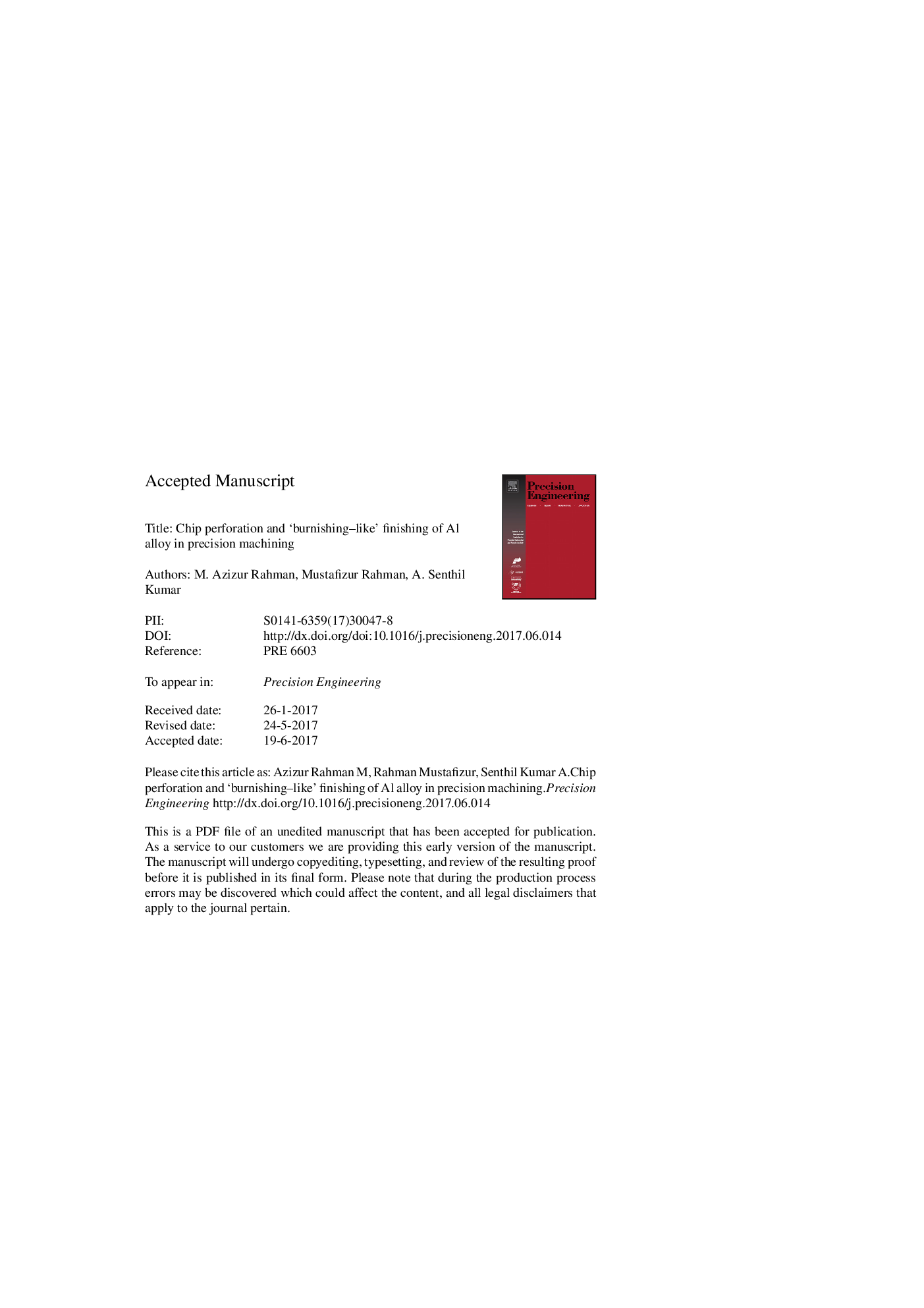| کد مقاله | کد نشریه | سال انتشار | مقاله انگلیسی | نسخه تمام متن |
|---|---|---|---|---|
| 5019060 | 1467838 | 2017 | 30 صفحه PDF | دانلود رایگان |
عنوان انگلیسی مقاله ISI
Chip perforation and 'burnishing-like' finishing of Al alloy in precision machining
ترجمه فارسی عنوان
سوراخ کردن چیپس و پایان دادن به آلیاژ آلومینیومی در ماشینکاری دقیق
دانلود مقاله + سفارش ترجمه
دانلود مقاله ISI انگلیسی
رایگان برای ایرانیان
موضوعات مرتبط
مهندسی و علوم پایه
سایر رشته های مهندسی
مهندسی صنعتی و تولید
چکیده انگلیسی
In precision machining, a high quality machined surface cannot be achieved without using a diamond tool, due to the deterioration of workpiece surface integrity. Burnishing process is often used to improve the surface integrity by minimizing the roughness of the machined surface. For any given cutting tool-workpiece combination, the surface roughness depends on a parameter known as relative tool sharpness (RTS), which is quantified as the ratio of undeformed chip thickness (a) to tool edge radius (r). To achieve burnishing-like surface quality from precision machining, it is necessary to understand the material deformation behaviour in machining. Moreover, the quality of the machined surface is also directly related to the formation of μ-chip and its geometry. Thus, in this study, an attempt has been undertaken to develop the behavioural chip formation mechanics for the transition from unstable to the stable regime. Orthogonal microcutting experiments have been conducted with Al alloy (Al 6082) workpiece to investigate the micro-mechanics of chip perforation and to develop the chip stability mapping. Furthermore, the quantitative assessment criterion has been adopted to determine the material flow stress, which augmented the investigation of the burnishing-like deformation behaviour. By appraising the factors like machined surface integrity, compressive flow stress and improvement of surface roughness (Ra) profile, a 'burnishing-like' finishing zone has been identified. Additionally, SEM and EDX analyses have been performed to study the elemental composition of μ-chips, which allowed to validate the transition phenomena of chip perforation from incomplete (unstable) to complete (stable) chip formation. The applicability of this novel study lies in its ability to produce superior quality machined surface without requiring a secondary finishing operation and thus, improving the performance of precision machining.
ناشر
Database: Elsevier - ScienceDirect (ساینس دایرکت)
Journal: Precision Engineering - Volume 50, October 2017, Pages 393-409
Journal: Precision Engineering - Volume 50, October 2017, Pages 393-409
نویسندگان
M. Azizur Rahman, Mustafizur Rahman, A. Senthil Kumar,
